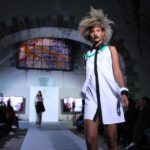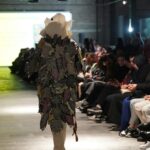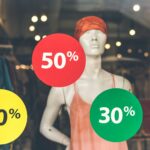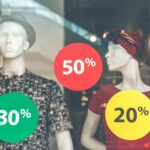AI-Driven Innovation: Transforming Fashion Design and Consumer Experience in 2025


Photo by Ben Iwara on Unsplash
Introduction: The AI Revolution in Fashion Design
In 2025, artificial intelligence (AI) has evolved from a futuristic concept to a driving force in the fashion industry. Designers, brands, and consumers are witnessing a fundamental transformation as AI-powered tools automate creative processes, predict style trends, and personalize shopping experiences. This revolution is not about replacing human creativity-it’s about amplifying it, enabling fashion professionals to push boundaries and respond to rapidly changing consumer demands. The adoption of AI in fashion is accelerating, with the market projected to reach $3.14 billion this year and potentially soar to $60 billion by 2034, reflecting a near 39% annual growth rate [4] . Let’s dive into how AI is fueling innovation, driving sustainability, and reshaping every step of fashion design.
AI in Fashion Design: From Inspiration to Automation
Traditionally, fashion design has relied on intuition, manual sketching, and market research. Today, AI-driven platforms like Adobe Sensei , Designify , and Fashwell are revolutionizing the creative process. These tools analyze vast datasets-ranging from historical runway trends to real-time social media aesthetics-to help designers generate mood boards, draft sketches, and even recommend sustainable materials tailored to specific briefs [1] . For example, a designer aiming for a streetwear collection with 70s glam can input these inspirations and instantly receive AI-generated concepts and sample designs.
Design automation is further enhanced by deep learning and neural networks . By learning from thousands of fashion samples, these algorithms suggest trending combinations, helping designers modernize vintage prints or reimagine classic silhouettes. Some designers report that AI-generated iterations even surpass their manual drafts, accelerating the creative cycle and enabling rapid prototyping [5] . In practice, this means designers can launch digital collections, experiment with materials, and adapt styles to consumer feedback-all with unprecedented speed and accuracy.
Trend Forecasting and Market Insights
AI’s analytical capabilities are transforming how brands anticipate and respond to fashion trends. Advanced platforms such as Heuritech use image recognition to scan millions of social media posts, identifying emerging trends across colors, shapes, fabrics, and prints. These insights help brands forecast demand with remarkable precision, reducing inventory waste by up to 40% [4] . For instance, if neon green is gaining traction on Instagram and TikTok, a brand can quickly incorporate the color into upcoming lines-staying ahead of consumer preferences and minimizing unsold stock.
This data-driven approach also supports sustainable production. AI-powered trend forecasting enables brands to manufacture only what’s likely to sell, minimizing overproduction and reducing the industry’s carbon footprint. As fashion is responsible for 10% of global COâ‚‚ emissions and sees 87% of fibers end up in landfills, these efficiencies are crucial for building a responsible future [4] .
Generative AI: Photorealism and Virtual Prototyping
Generative AI models, including diffusion models and GANs (Generative Adversarial Networks) , are pushing the boundaries of digital fashion design. These technologies create photorealistic renderings, allowing designers to visualize garments in high detail before physical production [5] . In advertising, AI-generated visuals help brands produce compelling, targeted campaigns that capture consumer attention without costly photoshoots [3] .
Virtual fitting rooms, powered by AI, let consumers try on clothes digitally, reducing returns and improving satisfaction. Brands such as Gucci and Ralph Lauren have piloted virtual try-on experiences, integrating AI to match fit and style to customer profiles. These innovations are making online shopping more immersive and personalized, while also supporting sustainability by decreasing unnecessary shipments [2] .
Personalization and Enhanced Consumer Experience
AI is redefining customer engagement in fashion. By analyzing purchase history, browsing behavior, and even calendar events, AI-powered platforms can curate personalized recommendations and build capsule wardrobes tailored to individual lifestyles [1] . Some brands deploy AI stylist chatbots, offering real-time advice and outfit suggestions based on current trends and customer preferences.
For consumers seeking a unique experience, AI enables virtual clothing rental and digital fashion-where users can “wear” garments in online meetings or social platforms. This opens new revenue streams for brands and allows consumers to experiment with styles risk-free. To access these services, shoppers can explore major brand websites, search for “AI stylist” or “virtual try-on,” and use official retail apps. For personalized recommendations, customers may need to create accounts and input their preferences, with privacy protected under current data regulations.
Sustainable Practices and Ethical Considerations
As AI drives efficiency, it also supports sustainable practices . By forecasting demand and automating production, brands can reduce waste, conserve resources, and create eco-friendly collections. Many companies, such as Stella McCartney and H&M, utilize AI to source sustainable materials and optimize manufacturing processes. To learn more or participate in sustainable fashion initiatives, consumers can visit official brand websites, follow sustainability blogs, or search for “AI in sustainable fashion.” While AI offers powerful benefits, ethical concerns-such as data privacy and deepfake misuse-require ongoing vigilance and regulatory oversight [3] .
Implementation: Step-by-Step Guidance and Access
If you’re a designer or brand looking to integrate AI into your workflow, here’s a step-by-step approach:
- Identify your goals: Trend forecasting, design automation, virtual try-ons, or sustainability.
- Research AI platforms: Look for established tools like Adobe Sensei, Heuritech, or Designify. Visit their official websites to review features and request demos.
- Train your team: Invest in workshops or online courses about AI in fashion. Many universities and industry organizations offer certified programs-search for “AI fashion design courses” at accredited institutions.
- Start small: Pilot one aspect of AI, such as automated sketching or virtual try-ons, and monitor the impact on workflow and consumer engagement.
- Collaborate and iterate: Work with technology partners, gather feedback, and refine your approach based on results and ethical guidelines.
For consumers, explore brand apps and online platforms offering AI-powered recommendations and virtual fitting. Always check privacy policies and opt for reputable retailers with transparent data practices.

Photo by Happy Face Emoji on Unsplash
Challenges, Alternatives, and Future Outlook
While AI adoption is accelerating, challenges remain. Smaller brands may struggle with high upfront costs or lack of expertise, but open-source AI tools and industry partnerships can provide affordable entry points. Ethical concerns around data use and digital manipulation require ongoing attention and transparent guidelines.
Alternatives to full AI integration include manual trend analysis, traditional prototyping, or collaborating with data analytics firms. However, as AI capabilities expand, brands and designers that embrace these technologies gain a competitive edge in creativity, efficiency, and sustainability.
Looking ahead, the fusion of AI and fashion will only deepen. Expect further breakthroughs in real-time co-design, digital fashion rentals, and hyper-personalized collections tailored to individual consumers. The future is one where technology and creativity harmonize, shaping a more responsive, sustainable, and exciting fashion industry.
References
- [1] Ayerhs Magazine (2025). AI and Fashion: Revolutionizing Design and Consumer Experience.
- [2] FashionXT (2025). AI and Fashion Fusion: Anticipating Trends and Innovations.
- [3] SG Analytics (2025). Future of AI in Fashion Industry: AI Fashion Trends 2025.
- [4] Heuritech (2025). AI And Creativity In Fashion: Bridging Gaps.
- [5] Tezeract (2025). 7 Surprising Wins Of Generative AI For Fashion In 2025.






